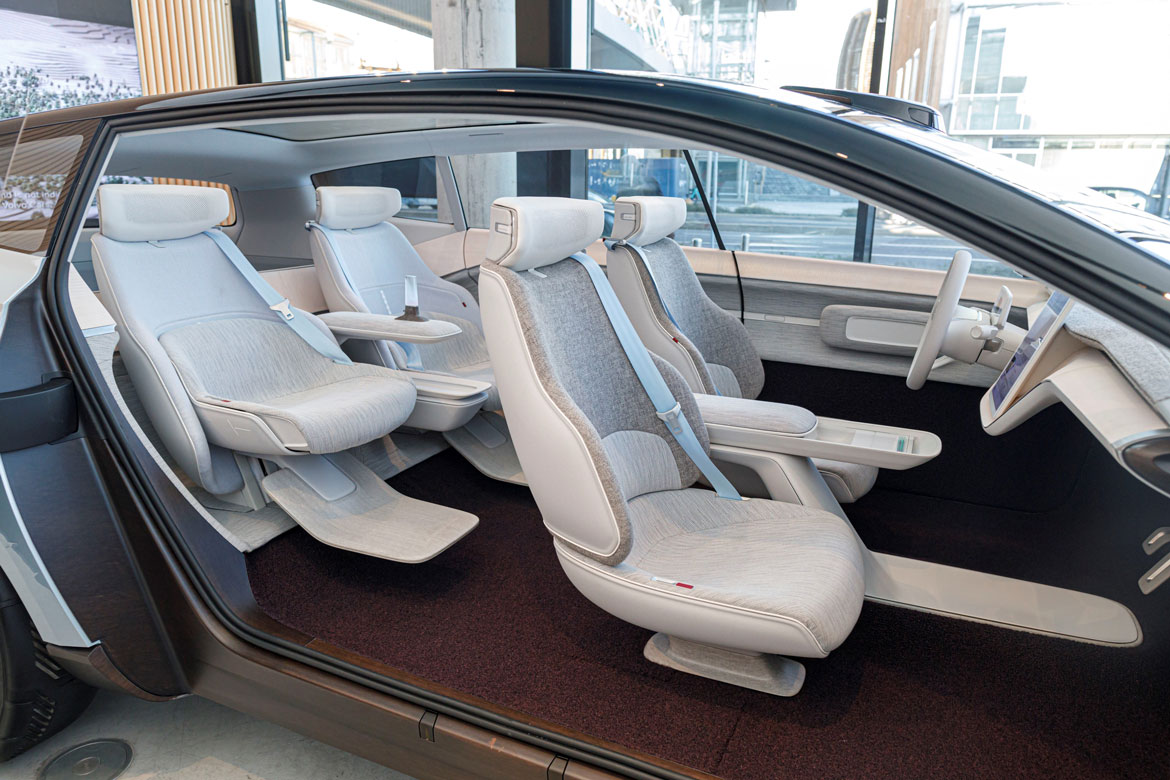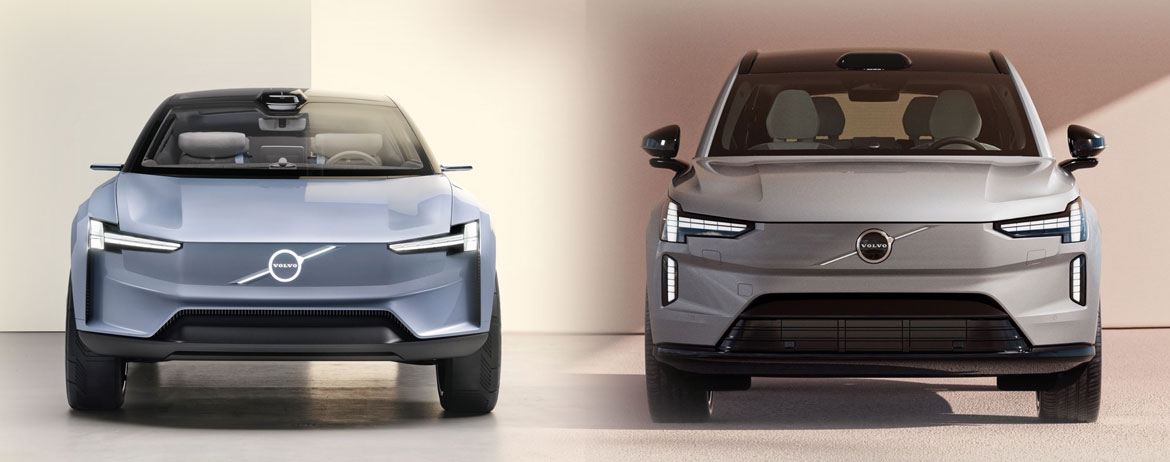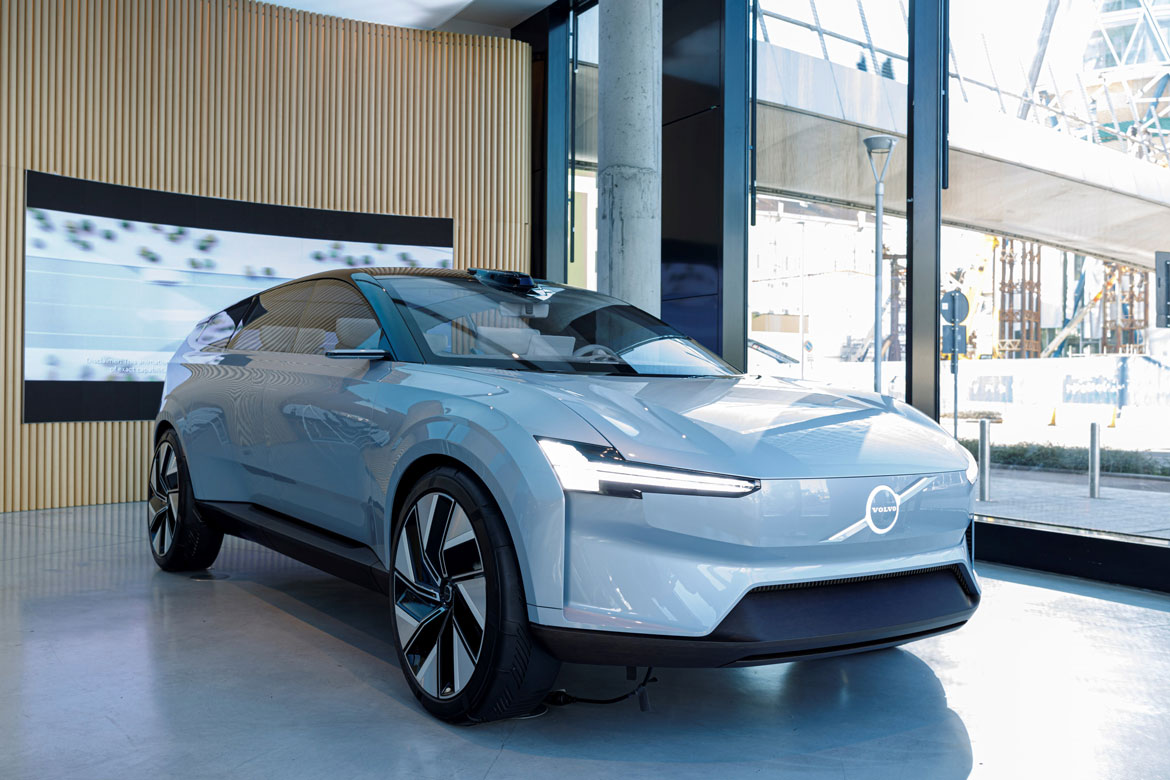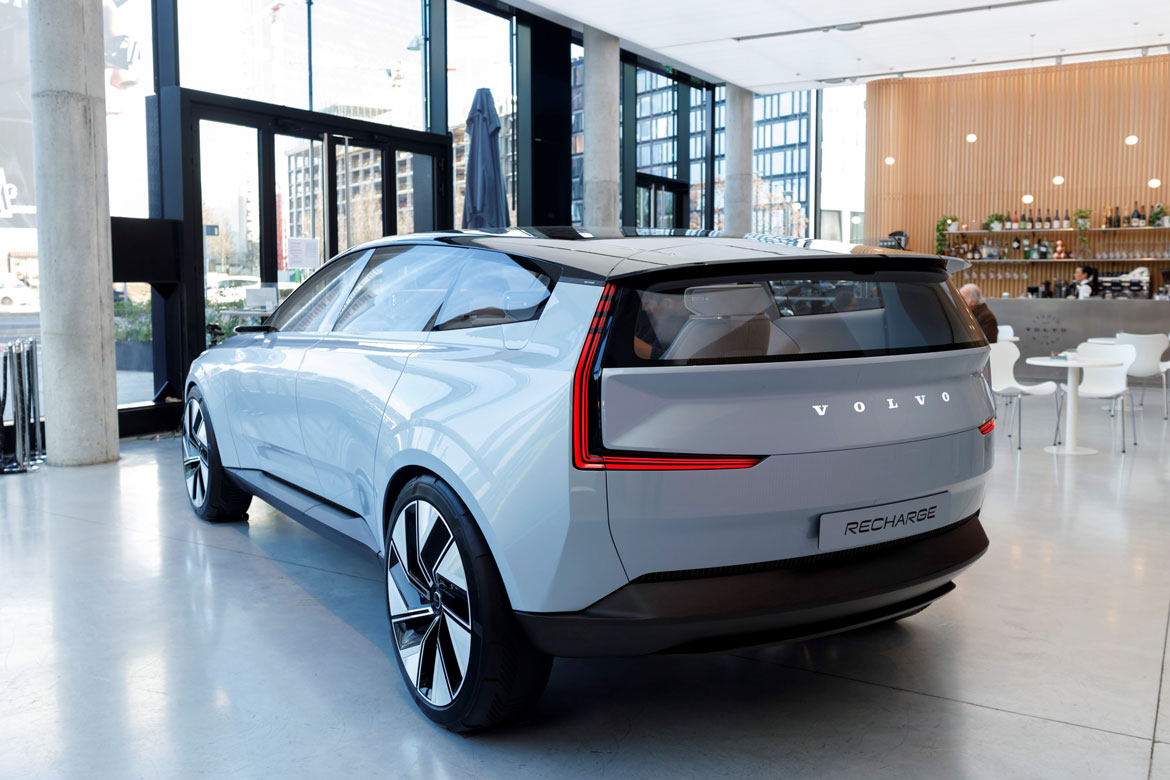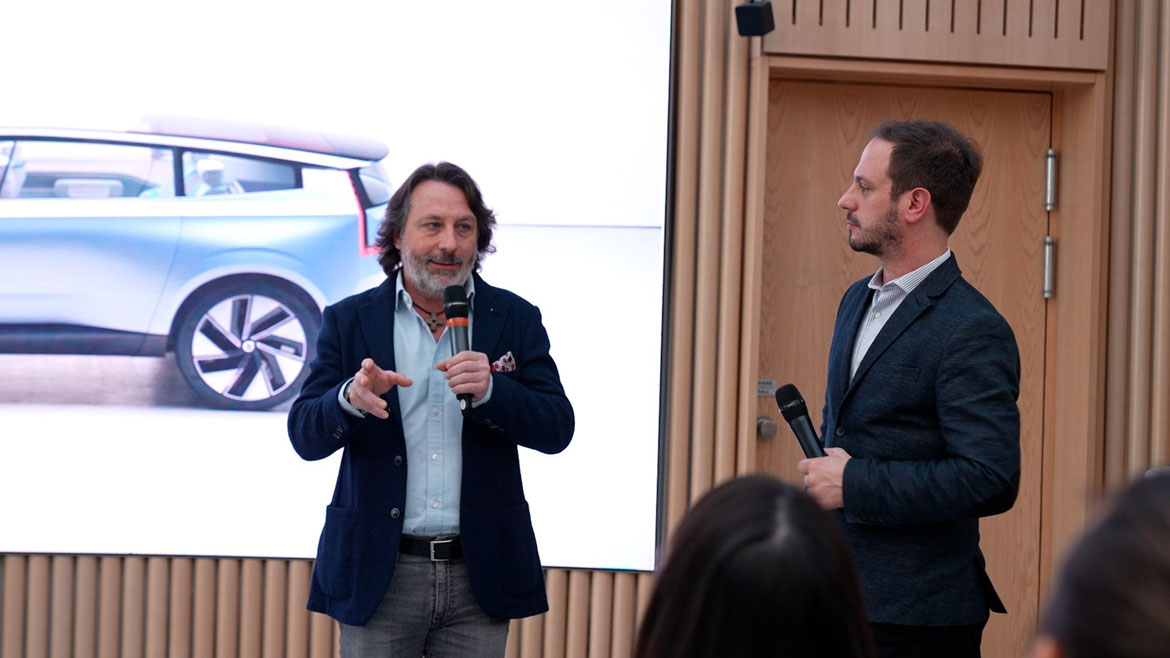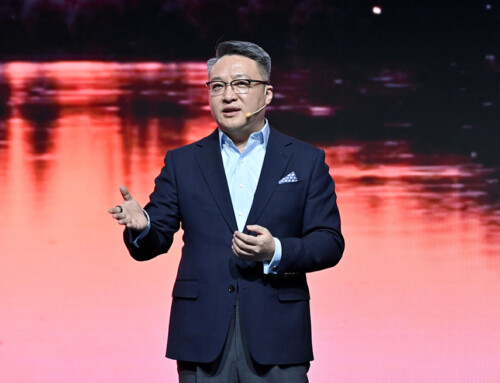Presented in July 2021, but only in virtual mode and hidden for more than a year due to the pandemic, the Volvo Concept Recharge (Auto&Design cover story no. 250) showed off all its innovation and design in the setting of the Volvo Studio in Milan.
A fundamental project for Volvo, based on three essential pillars: safety, sustainability and design, and one that will be an inspiration for the brand’s forthcoming electric future, starting with its first direct descendent, the EX90 soon to come to market.
The clean lines, streamlined architecture, and minimalist styling catch the eye while providing maximum energy efficiency to this concept car, which is based on the Swedish brand’s new 100% electric platform and embodies Volvo’s signature design features, including the Thor Hammer LED headlights, taut profile, and iconic vertical taillights.
The exhibition of the Concept Recharge was an opportunity to showcase Volvo’s initiatives to reduce the carbon footprint of its products and all its activities. Indeed, the Swedish manufacturer plans to distribute only 100% electric cars by 2030 and achieve company-wide climate neutrality in 2040.
An evolutionary process that also includes the use of sustainable materials, produced with clean energy from a certified supply chain. From the interior elements to the tyres, from the bumpers to the trim, the use of sustainable materials is extensive, such as responsibly produced wool produced in Sweden and processed into an all-natural, additive-free, breathable fabric; or the flax compound, also used for the bumpers and heel bars.
On the technological side, this car offers a range of equipment that has high hopes in the potential of autonomous driving with cutting-edge high-tech content, advanced control systems, such as the new Lidar, and equipment capable of concretely implementing all-round safety.
Closing the three-day event that accompanied the live debut of the Volvo Concept Recharge, there was an opportunity for discussion and reflection on the theme “Gaming and dematerialisation: evolution, revolutions and resistance in car design”, together with Riccardo Balbo, academic director of IED – Istituto Europeo di Design (European Institute of Design), and Michele Albera, Transportation Design and Master Coordinator of IED in Turin.

